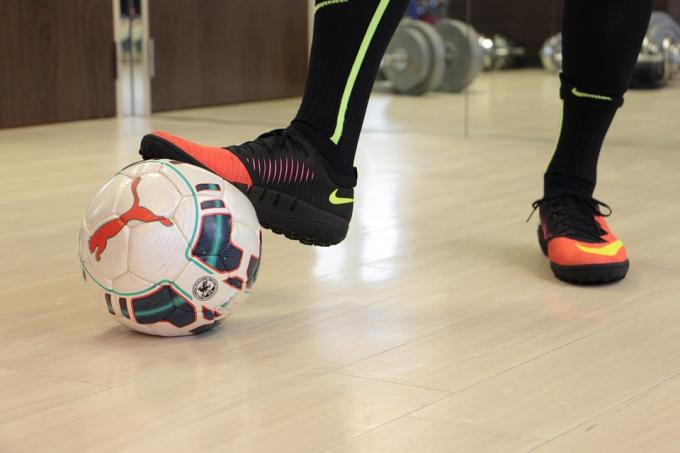
O futsal it is a team sport also known as indoor soccer, as it is very similar to soccer played on fields, with some modifications in the style of play.
The main differences from. futsal compared to traditional football are the amount of players that. form each team and the area available for play, which is greatly reduced.
Index
Futsal was created no. Uruguay, in the 1930s, by a physical education teacher named Juan. Carlos Ceriani Gravier, from the Young Men's Christian Association. When it came, this one. sport was called Indoor. Football, that is, football in an enclosed area, and was played by formed teams. for 14 players each, which was later reduced to 10.
When it was invented, futsal was played with a lighter ball, which was replaced by heavier balls, which are still used today.
See too: Soccer.
Upon entering the court, a futsal team. aims to score more goals than your opponents to win a. match, in a total playing time of 40 minutes. These 40 minutes are divided. in two 20-minute periods separated by a 10-minute break.
Futsal players work the ball through dribbling, passing, kicking, cycling and heading to attack, defend and maintain possession.

Each futsal team has five. line players and a goalkeeper, there may be up to seven players on the bench. reservations. Line players act in wing, stationary and pivot positions.
A futsal game is played in one. quadrangular type court. Men's League games are played on a court of. 38 to 42 meters long and 18 to 25 meters wide.
A futsal ball is 62 to 64. centimeters in circumference and weighs from 400 to 440 grams, according to the. rules stipulated by FIFA.
Each futsal match is accompanied by. a main referee and an assistant. Matches also have a timekeeper. which marks the time of the match and a note-taker.
The team that scores the most goals wins the match e. in this modality there is no impediment. Fouls committed in the game can be. directly or indirectly, and players can be punished with cards. yellows and reds (which cause the athlete to be expelled).
In futsal, players are divided into. marking, attacking and defending positions, which can be classified as fixed, wings, pivots and goalkeepers:
According to the category of teams in. field, the quadrangular dimensions of the court can vary from 24 to 42 meters of. length and from 15 to 22 meters in width, and can be covered or uncovered.
The court is divided into two parts, being. each half assigned to a team. A futsal court also has several. markings on the ground that help in free kicks and in the positioning of. players.
The main markings on the court are in the center of the court, the penalty area and a. replacement area.
The center of the court is marked by one. line that has the function of dividing the field in two. In the middle of this line is. marked a circle of ten centimeters in diameter in which the game begins. Around. of this smaller circle, there is another circle three meters in diameter whose. function is to mark the position in which the other players must be at the beginning of. game.
The penalty area consists of. in a semi-circle with a radius of six meters marked at the ends of the court. This area has the function of determining and limiting. region where penalties are taken and the area where the goalkeeper can. defend the balls with your hands.
The replacement area consists of one. outside the field, and each team has its own substitution area. This area is five meters long and eighty centimeters wide, close to the reserve bench.
Subscribe to our email list and receive interesting information and updates in your email inbox
Thanks for signing up.


